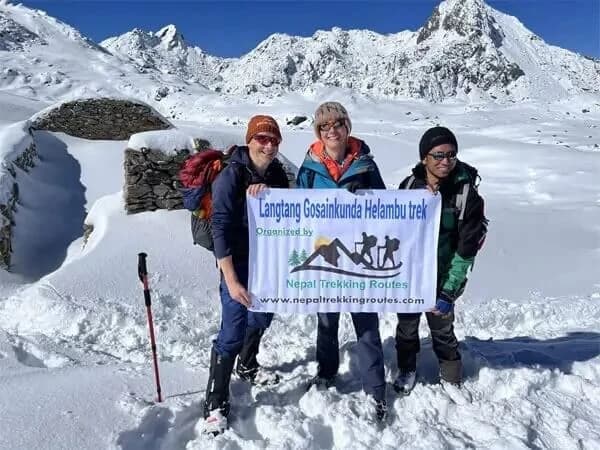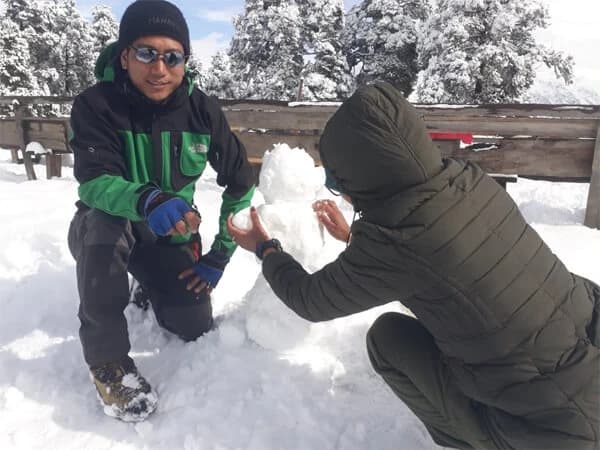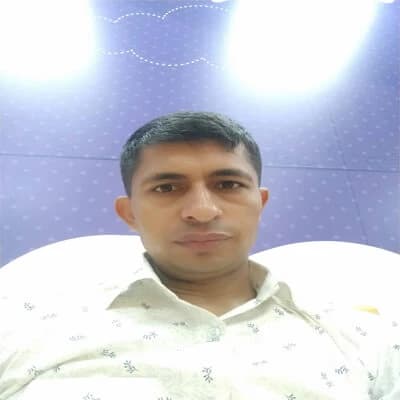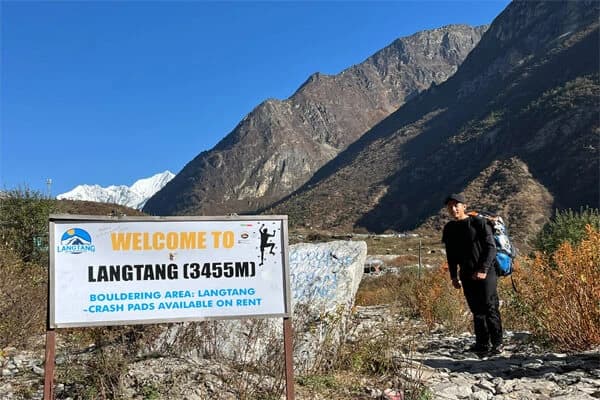The Langtang Gosaikunda Trek itinerary is among the greatest options in Nepal if you're searching for a Himalayan journey that blends mountain vistas, local customs, and holy lakes. The Langtang Valley and Gosaikunda Lakes are two breathtaking locations that are combined into one amazing journey on this trek. Wandering through serene forests, passing past Tamang settlements, taking in views of snow-capped hills, you will eventually arrive at the revered glacial lakes of Gosaikunda, which are thought to have been formed by Lord Shiva himself.
This journey is unique because, although it is less populated than Everest or Annapurna, it nevertheless offers you the complete Himalayan experience without being overly strenuous or time-consuming. Because the route is so adaptable, you can shorten or lengthen it based on your fitness level and time.
To assist you in organizing your own trip, we'll walk you through a comprehensive Gosaikunda via Langtang trekking itinerary in this blog. Information on elevation, trail conditions, highlights, and helpful hints are provided. This guide will help you get ready and thrilled whether you're trekking alone or with a guide. Let's set out on a journey across two of the most breathtaking and memorable mountain regions in Nepal.
Langtang Gosainkunda Trek route Overview
The Langtang Gosaikunda Trek is a stunning trekking adventure in Nepal's highlands. Typically, Langtang Gosainkunda combined trek takes 12 to 14 days to complete. The journey begins with a lengthy drive to the small hill town of Syabrubesi from Kathmandu. You then start to stroll into the Langtang Valley, which is encircled by rivers, snow-capped mountains, and green woods.
The Langtang Gosaikunda Trekking Routes distance is approximately 110 to 130 kilometers (68 to 81 miles), depending on the specific trail variations and side treks (like Tserko Ri or side visits to nearby villages).
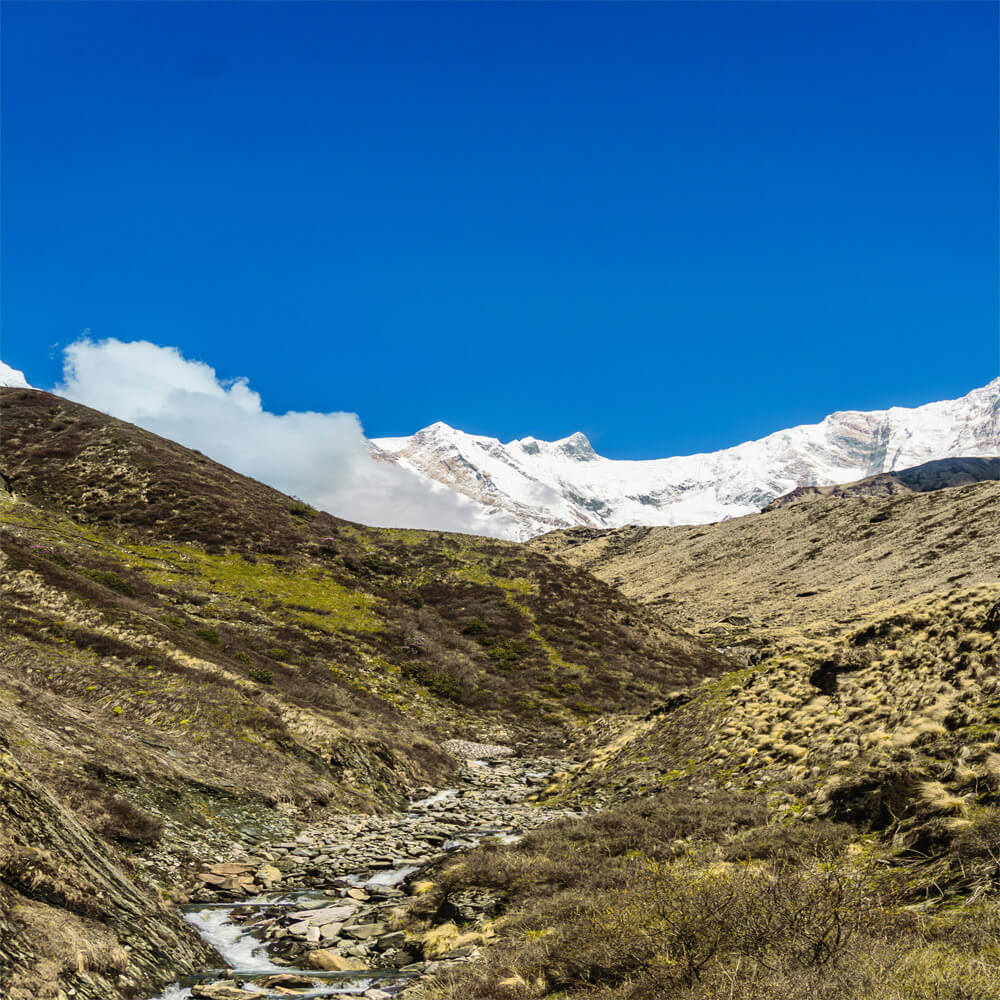
Visiting the tiny, high-altitude settlement of Kyanjin Gompa is one of the trek's most thrilling experiences. You can trek to a high peak known as Tserko Ri for breathtaking views, see large mountains, and even visit a Buddhist monastery.
The Langtang to Gosainkunda trekking trail map then leads to a collection of sacred lakes called Gosaikunda. Hindus and Buddhists hold these lakes in high regard. The place is serene and calm, making it ideal for contemplation and taking in the scenery. Additionally, you will traverse Lauribina La, a massive mountain pass that is almost 4,600 meters high and the trek's highest point.
You will pass through welcoming villages with modest lifestyles along the route. You will sleep in tiny guesthouses known as teahouses, interact with the Tamang people, and eat warm meals like dal bhat (rice and lentils).
Those who enjoy walking, wish to see large mountains, and want to learn about local culture would love this excursion. You must walk for several hours each day, but it is not too difficult. It is made even simpler with the assistance of a porter or guide.
The Langtang Gosaikunda Trek is unique because of mountains, culture, and sacred sites. It is a serene and lovely journey that feels like it is in a separate universe, although it is still near to Kathmandu.
Langtang Gosaikunda Trek Highlights
There are many serene spots and lovely moments during the Langtang Gosaikunda Trekking in Nepal. It blends the spiritual splendor of Gosaikunda Lakes with the serene appeal of Langtang Valley. Strolling through green forests with pine, bamboo, and rhododendron trees is one of the highlights. In addition, you will be surrounded by large snow-capped mountains, rivers, and waterfalls.
You may visit friendly Tamang communities in the Langtang Valley which is popular as Langtang valley trek and discover more about their way of life and culture. With a little monastery and vistas of glaciers and towering peaks like Langtang Lirung, the settlement of Kyanjin Gompa is a unique location. For one of the Himalayas' greatest sunrise vistas, you can also walk to Tserko Ri.
The trek eventually leads to the revered Gosaikunda Lakes, which are located high in the highlands. These pristine lakes are serene and serene to view, and are said to be sacred. You even traverse the lofty Lauribina Pass, which offers breathtaking vistas and a fun challenge.
You can enjoy some peaceful time in nature because this trek is not overly crowded. It's ideal for anyone seeking a memorable trip that combines culture, mountain views, and a dash of spirituality.
Langtang Gosaikunda Trek Elevation Profile
The most difficult elevation gain occurs between Shin Gompa and Lauribina La Pass, and the trek features gradual ascents and descents. For comfort and safety, adequate acclimatization is still beneficial even though it doesn't reach Everest-like heights.
| Place |
Elevation |
| Kathmandu |
1400 meters |
| Syabrubesi (Starting Point) |
1460 meters |
| Lama Hotel |
2,470 meters |
| Langtang Village |
3,430 meter |
| Kyanjin Gompa (Highest Point in Langtang Valley) |
3,870 meters |
| Tserko Ri (Optional Side Trek) |
4,984 meters |
| Thulo Syabru |
2,250 meters |
| Shin Gompa / Chandanbari |
3,330 meters |
| Gosaikunda Lake |
4,380 meters |
| Lauribina La Pass (Highest Point of the Trek) |
4,610 meters |
| Dhunche |
2,030 meters |
| Sundarijal (Ending Point) |
1,460 meters |
What are the Day-by-Day Itinerary for Langtang Gosainkunda Trek
Langtang Gosainkunda adventure trekking plan through mountains in Nepal is an amazing experience. It begins in Syabrubesi, a tiny settlement, and ends close to Kathmandu. You pass through villages, forests, rivers, and high mountain lakes on your journey. There is something fresh and fascinating every day. To help you prepare, allow me to take you through Langtang Gosainkunda trek schedule for each day.
Drive from Kathmandu to Syabrubesi
It's a long yet lovely drive to start your adventure. Early in the morning, you will depart Kathmandu and make your way to the town of Syabrubesi. The vistas are breathtaking, but the route is winding and uneven. In the distance, you'll see rivers, tiny towns, green hills, and occasionally even snow-capped mountains.
The trip to Syabrubesi takes roughly seven to eight hours. You can check into a teahouse when you get there. Trekkers can eat and sleep in a teahouse, which is a tiny lodge. You can take a nap, prepare for your first walking day, and have a warm dinner.
Trek from Syabrubesi to Lama Hotel

Your first day of actual trekking is today. Along the Langtang River, you will stroll past wooded areas teeming with birds, monkeys, and trees. The trail is occasionally rocky or slick and climbs and descends. In tiny communities, you will stop for lunch or tea after crossing tiny wooden bridges.
After walking for 6 to 7 hours, you will arrive at the Lama Hotel. It is a collection of basic huts for trekkers rather than a hotel with rooms like in a metropolis. You'll feel content but exhausted. You can sleep more soundly when you hear the water.
Trek from Lama Hotel to Langtang Village
You start your ascent in the direction of Langtang Village after a satisfying breakfast. There is a lot of lovely nature on the trail today. In the distance, you will see snow-capped peaks, pine woods, and waterfalls. The air feels cooler and fresher as you ascend.
After almost six hours of walking, you will arrive at Langtang Village. The 2015 earthquake severely devastated this village, however it has since been rebuilt. Trekkers are greeted with warmth and kindness by the locals. After dinner, you will converse with locals and spend the night sleeping.
Trek from Langtang Village to Kyanjin Gompa
Compared to the previous days, today's trek is easier. With large mountains surrounding you, you will stroll leisurely and take in the expansive valley. As you pass by tiny chortens (Buddhist shrines) and vibrant prayer flags, you will notice yaks grazing in the fields.
You will reach Kyanjin Gompa after walking for four to five hours. There is a well-known historic monastery in this quiet town. You can sample yak cheese at the cheese plant as well! Before you head to bed, you can take a stroll about the village, snap pictures, and take in the beauty of the large snow-capped peaks.
Rest Day or Trek to Tserko Ri
Although today is a day off, if you feel up to it, you can take a quick trek. To get to Tserko Ri, a nearby high hill, many people trek. The round-trip time is roughly four to five hours. The view from the summit is breathtaking, but the path is tough. Langtang Lirung is one among the numerous towering mountains visible.
You can tour to Kyanjin Gompa if you don't wish to climb. You might take a stroll by the river, go to the monastery, or just unwind and observe the passing clouds. Resting your legs before the lengthy trek back is a smart idea today.
Trek from Kyanjin Gompa to Lama Hotel
You will begin to walk back the way you came today. The entire journey to the Lama Hotel will be downhill. The vista changes as you descend, so even if you have been on the trail before, it still feels fresh. On the way up, you might even run into other trekkers.
It takes six to seven hours to complete the walk. Although going downhill can be difficult on your knees, it is easier for your lungs. Enjoy the serene forests and take your time. You may relax, eat dinner, and get a good night's sleep after you arrive at the Lama Hotel.
Trek from Lama Hotel to Thulo Syabru
Your Langtang Gosainkunda trek with Thulo Syabru departs from the Langtang Valley today and go on a new journey. The trail is both up and down, and you will pass through small farms and forests. It takes five to six hours to complete the walk.
On a mountainside sits the sizable settlement of Thulo Syabru. The residents are amiable, and the homes are constructed in close proximity to one another. Nice views of Ganesh Himal and other neighboring peaks may be seen from this location. Before going to bed, you can take a look around the village and discover more about Tamang culture.
Trek from Thulo Syabru to Shin Gompa
You go farther into the mountains on today's trail. You will traverse forests of rhododendron and pine. It is like strolling through a mystical garden when the rhododendron flowers bloom in the spring in shades of red, pink, and white. Though not extremely steep, the trail slopes upward.
You arrive at Shin Gompa approximately four to five hours later. There are a few teahouses and a monastery in this tiny area. You can sample fresh cheese from a yak cheese plant or go to the monastery. Since there are no city lights here, the stars are exceptionally vivid at night.
Trek from Shin Gompa to Gosaikunda
One of the trek's most memorable days is this one. Gosaikunda, a collection of sacred lakes atop the mountains, will be reached by foot. The trail ascends sharply through open hills and woodlands. The trees give way after a few hours, and you are surrounded by rocky paths with snow-capped peaks. Although you will visit a number of lakes, the largest and most sacred is Gosaikunda. In total, it takes 7 to 8 hours. Ghopte is a tiny area with a few facilities for lodging and dining.
Trek back to Sing Gompa
The trail now passes serene areas and through hills covered with trees. The trek is not too difficult, but it is lengthy roughly six to seven hours. Enjoy the sounds of birds and the wind in the trees as you travel up and down gentle hills. The peaceful village offers a beautiful perspective of the Helambu area. The majority of the people here are farmers who lead modest lives. In this peaceful village, you can relax and have a good evening.
Trek to Dhunche
Your second-to-last day of walking is today's trek. The trail goes on through small farms and green hills. You will witness people leading goats and cows, carrying baskets, and working in fields. While you will still be able to see the mountains, you will also be able to see distant towns and valleys.
You will arrive at Dhunche approximately 5 hours later. Those looking for a quick trek from Kathmandu frequently visit this location. Before returning to the city, you can take in your last mountain sunset here.
Trek to Sundarijal and Drive to Kathmandu
Your trek is coming to an end today. You will stroll through the serene woodland of Shivapuri National Park, which is close to Kathmandu. Three to four hours are needed for the walk. Your vehicle will be waiting at Sundarijal. After bidding the mountains farewell, you will return to Kathmandu by car. After many peaceful days, the city sounds will seem odd, but you'll have pleasant memories with you.
The Langtang Gosaikunda region is a beautiful, challenging, and joyful place to visit on a daily basis. There is something new to see, feel, and recall with each step. Whether you want to go for the culture, the lakes, or the mountains, this walk will undoubtedly leave you with unforgettable memories.
What are the Best itinerary for Langtang Gosainkunda Trek?
The best itinerary for the Langtang Gosaikunda Trek is one that offers both breathtaking mountain vistas and a deep cultural experience. It combines the spiritual serenity of the Gosaikunda Lakes with the natural beauty of the Langtang Valley. The journey from Kathmandu to the beginning site, Syabrubesi, normally takes 12 to 14 days. Trekkers can see glaciers and even go to Tserko Ri on the first section of the journey, which travels through the Langtang Valley, Tamang settlements, and beautiful woods before arriving at Kyanjin Gompa, a high mountain village.
Partway back, the path heads toward Gosaikunda, a holy lake area frequented by Buddhist and Hindu visitors. During this Langtang Gosainkunda trek with Thulo Syabru, trekkers ascend to Gosaikunda Lakes after passing through picturesque towns and forests like Thulo Syabru and Shin Gompa. After crossing the route's highest point, Lauribina La Pass, the trip descends through Ghopte, Kutumsang, and Chisapani before coming to a finish at Sundarijal, from where it's a quick drive back to Kathmandu.
This program strikes a balance between culture, adventure, and scenic beauty. Trekkers with a modest level of fitness may accomplish it best in the spring or fall, especially if they have a local guide from our company, Nepal Trekking Routes.
Alternate Langtang Gosainkunda circuit Itinerary Options
Depending on their time constraints, level of fitness, or the destinations they are most interested in seeing, people may wish to modify their trekking plan for Langtang and Gosainkunda. The Langtang Gosaikunda Trek offers a great deal of flexibility. It can be longer, shorter, or even the other way around. Here are a few more methods to make this walk enjoyable.
Shorter Trek Option: Skip Kyanjin or Gosaikunda
You can shorten your journey if you don't have two whole weeks. One option is to forego the Kyanjin Gompa climb. This implies that rather than continuing on to Kyanjin, you turn around and walk back after arriving in Langtang Village. You will lose some breathtaking vistas of snow ranges and glaciers, but you will save one or two days.
Ignoring the second leg of the journey to Gosaikunda Lakes is another shorter option. You would just complete the Langtang Valley portion in this scenario. Although you wouldn't cross the high pass or go to the holy lakes, you would still view forests, rivers, and mountain communities. For those seeking a less strenuous excursion, this makes the trek quicker and easier.
Reverse Route: Start from Sundarijal
There are trekkers who choose to do things the other way. They start the walk in Sundarijal and finish in Syabrubesi, rather than starting in Syabrubesi and finishing in Sundarijal. This indicates that they travel to the Langtang Valley after walking through Chisapani, Kutumsang, and Gosaikunda.
The walk is equally stunning when done in reverse. The holy lakes, villages, and forests are still in your path. However, on the second or third day, especially when you get to Lauribina Pass, be prepared for a strenuous climb. The trek's highest point is that. After the strenuous ascent, the reward is arriving at Langtang Valley, where the air feels serene and the path becomes softer.
Add Helambu Section: Make It a Bit Longer
By touring to Helambu region at the end of the walk, you can extend it by a few days if you have additional time and energy. Helambu is home to peaceful villages, green hills, and friendly Hyolmo residents. Before arriving at Melamchi Bazaar, this route passes through locations such as Tarke Ghyang and Sermathang.
You can spend more time in nature, explore more tranquil trails, and get a better understanding of village life by including Helambu. It's a soothing way to end your trip because it's not too hard or extremely high.
Langtang Gosaikunda Trek 10-Day Itinerary
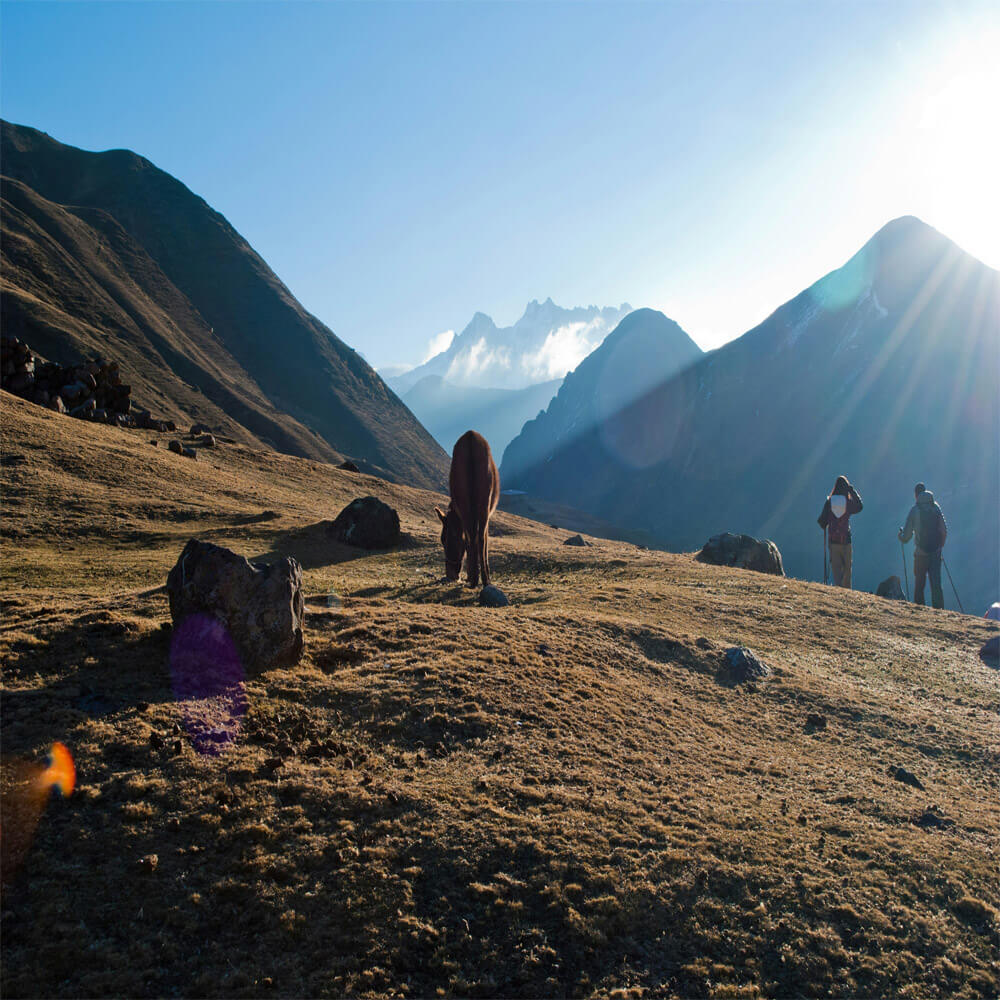
The 10-day Langtang Gosaikunda Trek is the ideal combination of spiritual beauty, local culture, and mountain adventure. Driving from Kathmandu to Syabrubesi is the first stop on this roundabout road, which then passes through the breathtaking Langtang Valley, the holy Gosaikunda Lakes, and Sundarijal or Dhunche.
You start your tour by traversing the Langtang Valley's forests, riverbanks, and Tamang settlements. You will have time to explore the glacier and take optional treks to Tserko Ri for breathtaking views after arriving at Kyanjin Gompa, the valley's cultural center.
The trail then heads toward Gosaikunda, a serene lake at a high elevation that is revered by Buddhists and Hindus. The trek's highest point, Lauribina Pass (4,610m), provides breathtaking sweeping views of the Himalayas.
Before your trip is over, you will descend through peaceful villages and woodlands in the Helambu region. For trekkers with limited time who yet like to have a fulfilling and rich Himalayan experience, this 10-day option is perfect. Without traveling to high altitudes like Everest or the Annapurna regions, it provides a full blend of nature, culture, and difficulty.
Choose What Feels Right for You
Everybody has a varied physique, schedule, and interests. Therefore, it's acceptable to make minor adjustments to the planning. It's still a lovely trek whether you walk the entire Langtang and Gosaikunda route, a shorter track, or the opposite direction. The most crucial thing is to take it easy, savor each moment, and pay attention to your legs and heart.
Tips for Planning Langtang Gosainkunda Trekking
Best Time for Langtang Gosainkunda Trek
The Langtang Gosaikunda Trek is best done in the spring (March to May) or fall (September to November). We basically call spring and autumn are the best season for Langtang Gosainkunda trek. The weather is pleasant, the skies are clear, and the mountain vistas are stunning throughout these months. The evenings are cool but not frigid, while the days are bright and not very hot. In addition, springtime brings vibrant flowers, and autumn brings clear blue skies. The monsoon season (June to August) is best avoided because of the heavy rainfall and potentially slick terrain.
How Fit You Should Be
This walk doesn't require you to be a mountain climber or extremely strong. However, you should be able to walk for five to seven hours every day and be in good health. There are many routes that go up and down, and some of them are steep. You'll be alright if you walk or trek frequently. To prepare for the trek, it helps to walk a little each day.
Should You Take a Guide?
It's a good idea to have a guide, especially if this is your first time trekking in Nepal. A guide can give you stories about the locations you visit, aid you with accommodations and meals, and knows the way. They also come in handy if you're feeling under the weather or something goes wrong.
Things to Bring
Bring a rain jacket, hat, water bottle, snacks, warm clothing, and sturdy trekking shoes. Having a small first-aid kit on hand is also a good idea. The views are breathtaking, so don't forget to bring a camera!
Take Cash
Bring enough Nepali money from Kathmandu because there aren't any ATMs in the mountains. It will assist you with lodging, meals, and other minor expenses.
Some of Frequently Asked Question
What is the duration of the Langtang Gosaikunda Trek in days?
Depending on your walking pace and whether you take rest days, the trek typically takes 12 to 14 days. While some trekkers do it more quickly, it's preferable to take your time and take in the scenery.
What time of year is ideal for this trek?
Spring (March–May) or fall (September–November) are the ideal seasons. The sky is blue, the weather is clear, and the vistas of the mountains are breathtaking throughout these months.
How difficult is the trek?
It's a moderate trek. Although there are some hard climbs, particularly close to Gosaikunda and the Lauribina Pass, most individuals with a minimum level of fitness and decent health can complete it.
Can I customize this trek?
Yes, this trek can be tailored to your interests, time constraints, and level of fitness. The itinerary might be shortened, rest days added, side treks like Tserko Ri added, or it could be combined with other neighboring treks like Helambu. It is easier to customize your trip when you work with our organization.
Conclusion: Langtang Gosainkunda Trek Itinerary
With its mountains, woods, and serene lakes, the Langtang Gosaikunda Trek is a stunning journey. You see large snow-capped peaks, stroll through tiny villages, and interact with friendly locals. Although the journey can be challenging at times, each day offers something unique and novel.
Nepal Trekking Routes can assist you in making the trek more enjoyable and easier. Friendly and well-versed in the trail, we are a local trekking company. We will assist you with your permits, lodging, food, and, if you'd like, even carrying your suitcase.
For those who enjoy the outdoors and desire a peaceful getaway from crowded areas, this trek is fantastic. You don't have to worry about the little things when you travel with our team. You will gradually make incredible memories that will last a lifetime.





